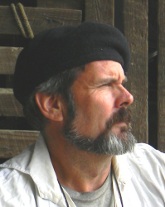You are hereOneida Caboose restoration work 4
Oneida Caboose restoration work 4
I've done other historic restorations of railroad equipment; as well as more everyday lettering on boxcars and hoppers. The latter gets less attention to detail. The biggest concerns are legibility, durability, and compliance with FRA regulations. The historic ones are different. A lot more time is spent on them. The time is used to research, draw the various sizes and styles of letters, and of course, to apply the lettering and logos. What I always find interesting is how each size of stencil letter has it's own style. To see those styles, download the vector files, and open them with vector editing software. Most of these are made with Inkscape, which is free, and does a nice job.
In the following pictures, I'm using vinyl paint mask to apply painted letters. They're not hand lettered, but they are paint. I still do hand lettering on a regular basis, so I'm no stranger to it; but these originally weren't lettered that way, so no need to do that now. In fact, I think this method closely replicates the way they were lettered back then. Don't quote me on this, but I think in many instances, they used a magnetic stencil. This produced a clean edge with little “underspray”. Also, I looked closely at lettering on a NS boxcar, and it appeared that there were consistent thin lines (lines where the paint was applied a little less) in place of the usual stencil “bridges”. In other words, it looked as though the stencil was made with a stiff wire that attached the middle parts of some letters to the outside part of the stencil. Letters like A,B,O P, anything with closed off parts in the middle. My guess is that the wire arched up, over, then down. I've made a drawing here, but this is only a theory.
 Stencil theory
Stencil theory
Again, the caboose in these pictures is the one out at a farm near Knoxville Tn. My guess color has been changed to have less visual impact on the neighbors. The vinyl paint mask is similar to the vinyl used to cut letters for signs. The differences are that it has less adhesion for easier removal; and it costs less than the other vinyl. After it's run through a plotter/ cutter, the letters have been cut through the vinyl, down to the waxy coated backing paper. The next step is to remove the letters, while leaving the rest on the backing paper. Next, an adhesive paper is applied over both of those, this is called transfer paper. The transfer paper holds the vinyl in place while the backing paper is removed. Then the vinyl paint mask is applied to the surface, after which the transfer paper is removed, leaving only the mask on the surface, which acts as really tight stencil. A stencil which requires no bridges, but that can only be used once. In the first picture below, there's three places where paint mask has been positioned. The bottom two have the backing paper removed and laying on the ground, but the transfer paper still on. The picture below that shows the transfer paper removed from the top two places, and part of the bottom one.
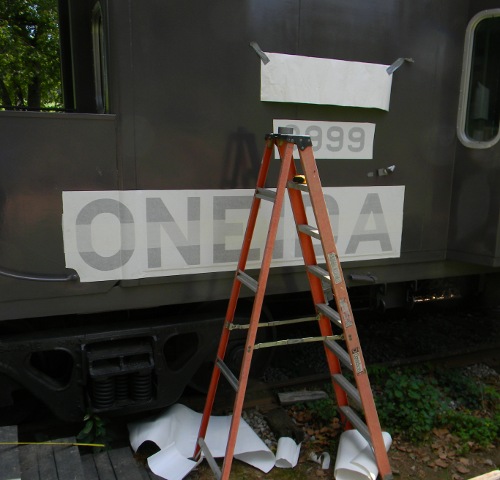
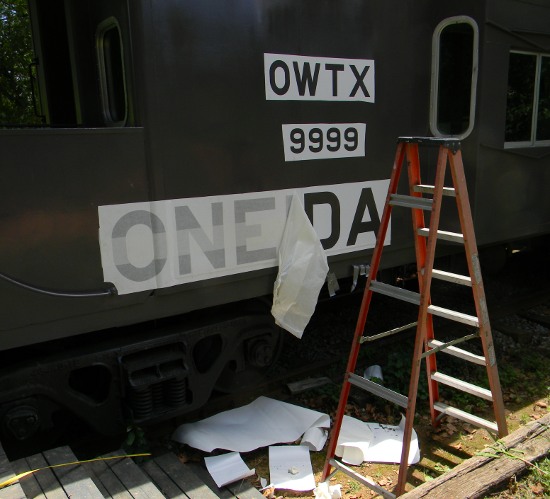
Dupont Imron comes in a slower drying formula, to this I add extra white pigment so that it's lettering paint. Lettering can be labor intensive, so you want one coat coverage. Pictured here is the paint and a roller pan. I use a three inch low nap roller.
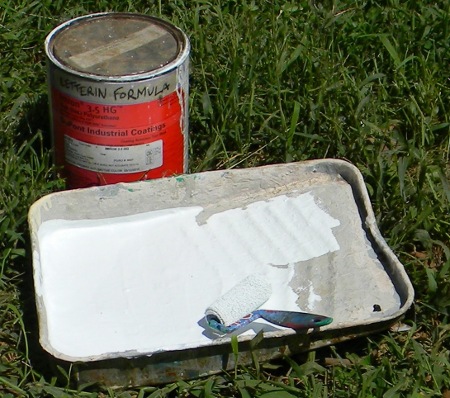
After the paint is applied in the exposed parts of the mask, I remove the mask, and the results look like this!!
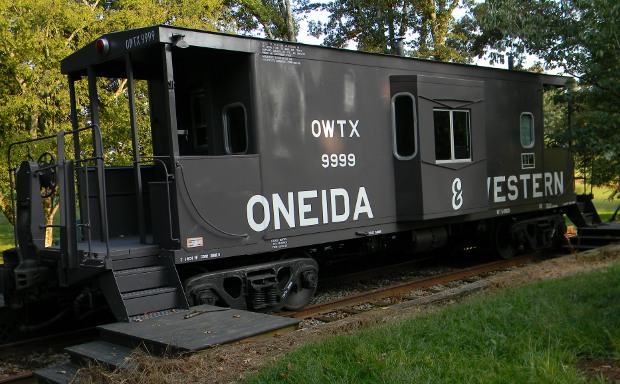
I thought it would be of interest to show a couple plumbing parts I found below the caboose. The one is just a piece of pipe, but I'm about positive the other is the water fill tube.
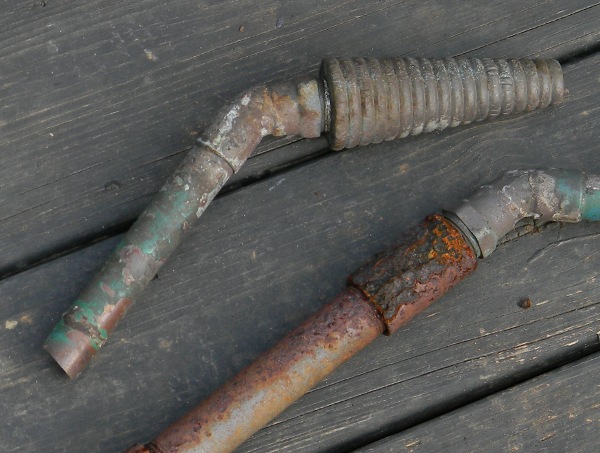
Here's a picture of the laptop in the field. It's very practical to have it with me on jobs like this. Invariably, I forget to write down some measurement regarding the positioning of some lettering; having the computer on site lets me check anything I want. The most common way I check for a measurement is to make a rectangle that fits closely over a part (in the picture) near the lettering, say the six inch tall steel support (beam?) that runs the length of the caboose body at the bottom. Then I make another long wide, but short rectangle that goes from the edge of the beam to where the lettering is. I move the wide horizontal rectangle next to the vertical rectangle, positioning it at the vertical center of the first rectangle. Then I select the two rectangles, and make the software scaling proportions locked; which makes the width of an enlargement scale at the same percentage as the height. So I tell the computer to make these two selected rectangles six inches tall, which makes the wide horizontal one the real life length it would be from edge of caboose to edge of lettering. It probably sounds complex, but you can figure a way to do this. It seems like a foolproof way of scaling, but I have encountered a few unexplained glitches; I'll write about those as the last page.

.
Restoration of OWTX caboose links
